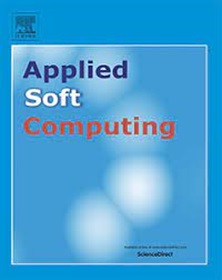A data-driven approach to microgrid fault detection and classification using Taguchi-optimized CNNs and wavelet transform
IF 7.2
1区 计算机科学
Q1 COMPUTER SCIENCE, ARTIFICIAL INTELLIGENCE
引用次数: 0
Abstract
The integration of microgrids into the bulk power system introduces inherent uncertainties that challenge conventional protection systems, encompassing factors such as low fault currents, operational modes, penetration levels of renewable sources, load variations, and network topology. These uncertainties significantly impact the overall reliability of the electrical system. In the event of a fault occurrence within or external to the microgrid, swift disconnection from the primary grid is imperative. This disconnection is facilitated through the immediate operation of a static switch positioned proximate to the common coupling point. Such rapid action is essential to mitigate potential damages and expedite the restoration of electrical services. To ensure the delivery of reliable and high-quality energy to end consumers while alleviating stress on the utility grid, this paper introduces a novel methodology for the efficient detection, classification, and localization of faults in a microgrid cluster connected to the external grid. The proposed system addresses diverse irregular conditions, including conventional faults, high-impedance faults, islanding scenarios, and adverse events, covering several zones within the microgrid cluster and the external electrical grid. The proposed approach is based on a fusion of the Taguchi methodology and the discrete Wavelet transform. This combination enables the optimization of convolutional neural network training using scalograms generated from the fault signals. The results demonstrate the model’s high performance, achieving 99.25 % accuracy in fault localization and 99.13 % in fault detection and classification, all within less than 10 ms. In comparison, traditional methods like support vector machine and decision trees require over 16 ms with lower accuracy, underscoring the superior speed and precision of the proposed approach.
求助全文
约1分钟内获得全文
求助全文
来源期刊

Applied Soft Computing
工程技术-计算机:跨学科应用
CiteScore
15.80
自引率
6.90%
发文量
874
审稿时长
10.9 months
期刊介绍:
Applied Soft Computing is an international journal promoting an integrated view of soft computing to solve real life problems.The focus is to publish the highest quality research in application and convergence of the areas of Fuzzy Logic, Neural Networks, Evolutionary Computing, Rough Sets and other similar techniques to address real world complexities.
Applied Soft Computing is a rolling publication: articles are published as soon as the editor-in-chief has accepted them. Therefore, the web site will continuously be updated with new articles and the publication time will be short.
 求助内容:
求助内容: 应助结果提醒方式:
应助结果提醒方式:


